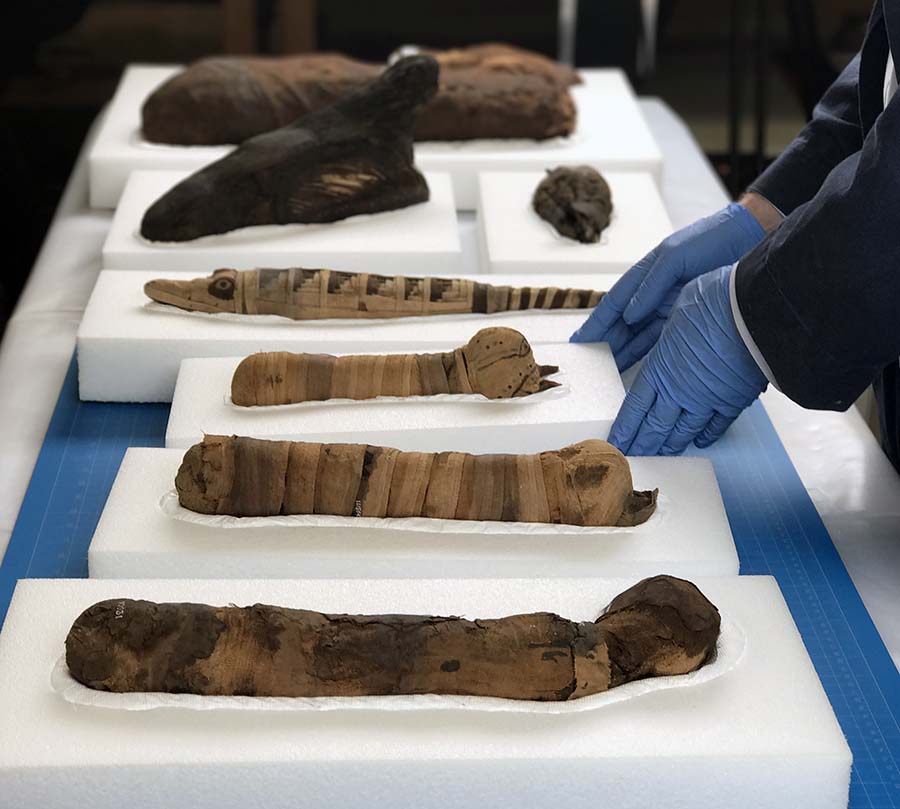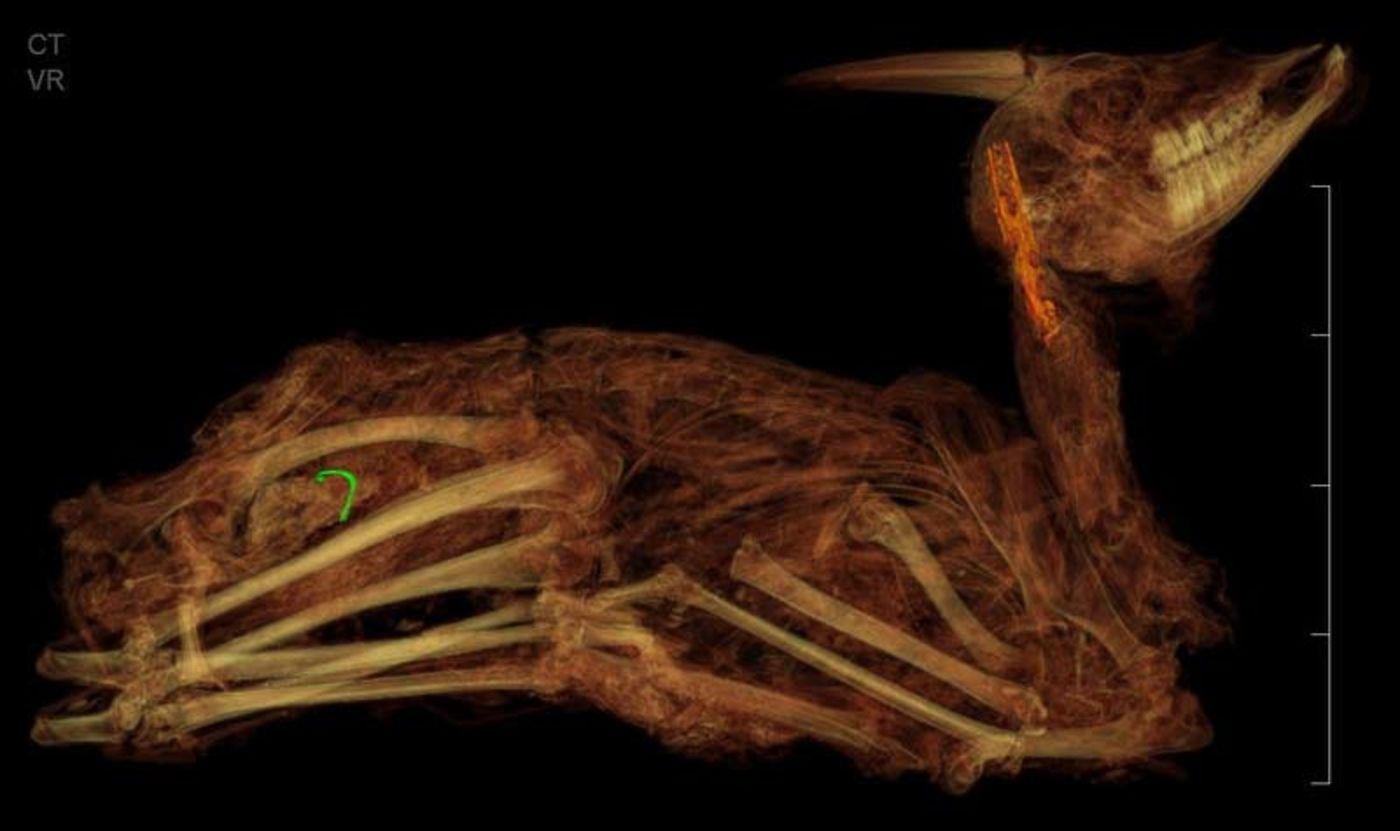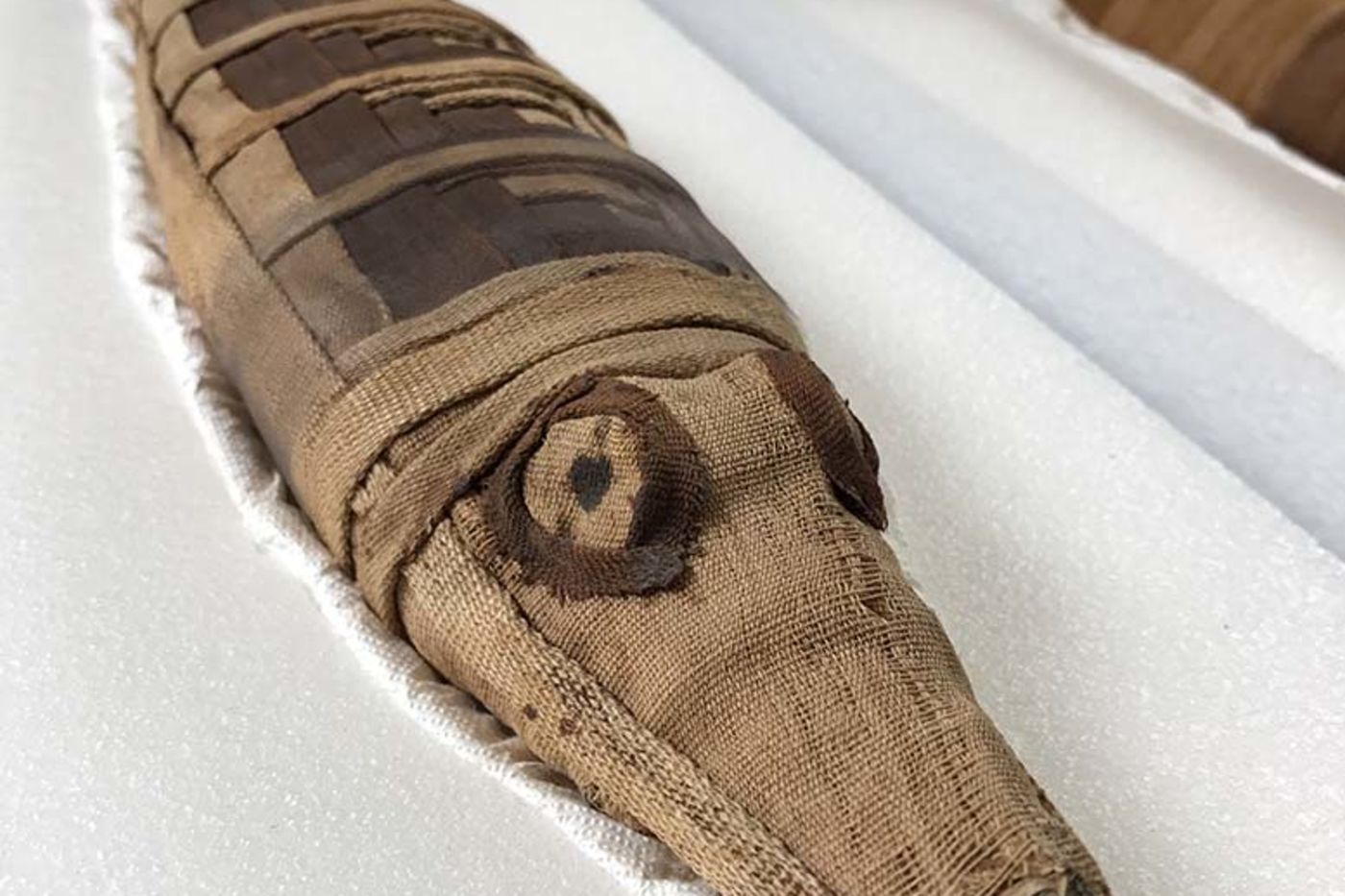If King Tut or the Gilded Lady come to mind when you think about mummies, you’re probably not alone—but humans weren’t the only ones to be mummified. In fact, not only did animal mummies exist, their production made for a thriving business in ancient Egypt.
Though pets might’ve been placed in tombs with their people, spending eternity with your beloved pup wasn’t the most common practice. Egyptians purchased animal mummies to present at the altars of specific gods, to ensure comfort both in this world and the afterlife. These mummies were intentionally produced for sale, and there was enough demand that it made economic sense to implement organized, factory-like systems to produce them.
We took a peek in the Field’s climate-controlled Regenstein Lab, where conservator JP Brown examined the mummified animals you can see in our Mummies exhibition.
Purr-fect deception: real and imitation cat mummies

Different kinds of animals had unique and sacred associations with deities, and people of all social classes bought animal mummies. Take these three cat mummies: the smallest one, with perhaps the most detailed feline expression, is “an elaborate fake,” says Brown—it doesn’t contain animal remains at all. This was the budget version of an offering to the goddess Bastet, who is represented as both a fierce lioness and then a more housecat-like animal in later depictions. Though not the highest-end offering, this pseudo-cat mummy was still a valid one that the goddess would likely accept.
The next-level mummy, seen in the middle, still doesn’t contain a cat but includes bird bones along with scraps of leather and sand—a slightly more authentic representation. Finally, for what Brown calls the “Lord & Taylor option,” the closest mummy contains the remains of a real cat. How do we know? Using a CT scanner, we were able to get a detailed glimpse inside these mummies without physically unwrapping them.
Gazelle: a gift to the goddess of the Nile

CT scans revealed this mummy to be a species of North African gazelle (Gazella dorcas). Mummies like this one would’ve been offered to the goddess Anuket, who personified the Nile River and was sometimes depicted as a gazelle. It was important to honor Anuket in order to ensure good water supply for the grain on which Egyptians depended.
A neonatal Nile crocodile

This intricate, linen-wrapped mummy contains a tiny—likely just-hatched—Nile crocodile. CT scanning revealed that the crocodile itself is even smaller than the mummy, just about six inches long. Adult Nile crocodiles can grow to 15 feet or more and were regarded as dangerous among Egyptians. The crocodile’s sacred status, associated with the god Sobek, was intended to grant humans protection.